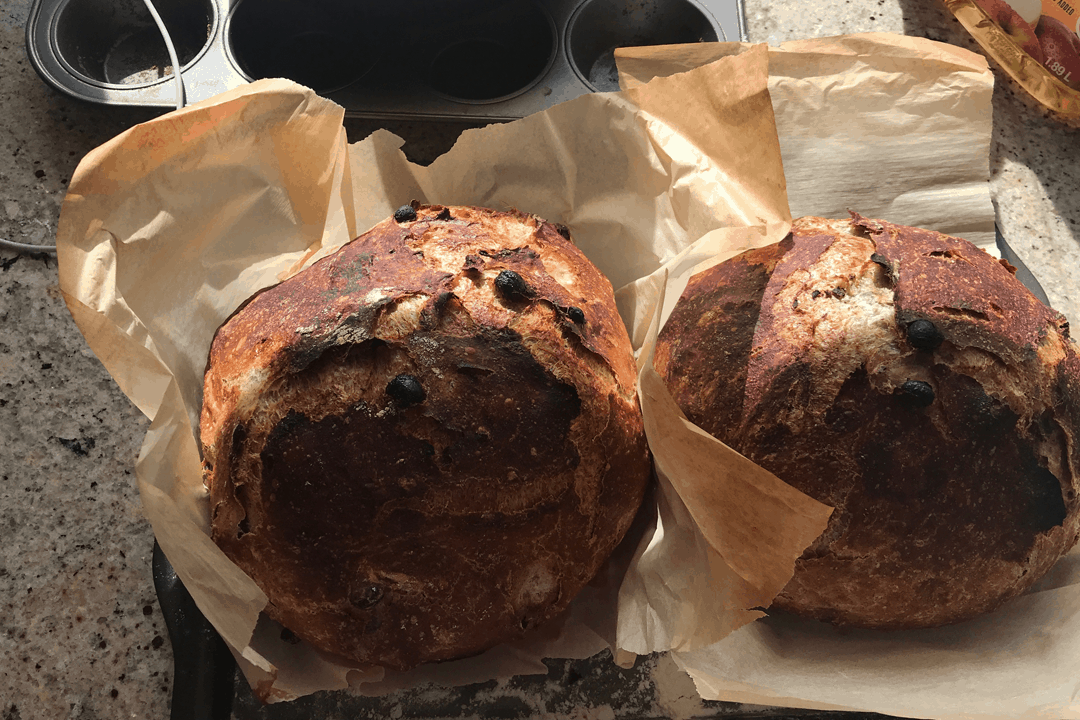I’ve always been suspicious of people who are very invested in the process of baking bread.
For one thing, they’re usually bread-baking people, which is to say they are very proud of themselves and their products. More than a hobby, bread becomes part of their identity, to be hoisted around in bars.
To me, making sourdough is a strange cultic activity that traps lonely people into schedules of care: rising and stretching and — inexplicably — feeding yeast. To what end? Big grain’s wet dream — an army of horny youths, kneading ceaselessly in their studio apartments.
Moreover, the mechanics of fermentation are entirely beyond the horizon of my interests. I refuse to care about gluten tension or dough salinity — terms I just invented that might mean something, but likely don’t.
Maybe I need to gender this complaint: I suppose I am particularly suspicious of men who become very invested in the process of baking bread. For some reason, I feel territorial about the activity, even though I have no interest in it. Bread is women’s work! Halakhic law backs me up on this.
But I lost my job and I’m graduating soon and I’ve been indoors for too long — so I’ve been baking bread.
Seventeen loaves so far, most of which my sisters and I deliver to the bottom of our neighbours’ porches. We wear gloves that were originally intended for dyeing our mom’s hair in the bathtub, but they’re functional enough. Of course, we’re very careful, so much so that it feels like we’re actors in a macabre play.
My time is now patterned like a housewife’s: every morning I wake up, listen to “Fast Car (2017 Dance Workout Edit Mix)” — this is just legal speed — and mix water into flour. I put yesterday’s risen dough into the oven, set up for tomorrow’s loaves, and then clean the kitchen. I make breakfast for my family. I clean the kitchen once again, and then I change into leggings and do pilates tapes in the basement. I’m living Sheryl Sandberg’s nightmare.
Although baking for others sounds generally altruistic, it’s absolutely not: without it, I would lose my mind. My routine is entirely self-serving. But caring for others in pathetically simple ways is — ironically — the only way to get through our mutual alienation.
Jacques Derrida postulates four conditions of a “free gift”: there must be no expectation of reciprocity, the recipient must not recognize the gift and thus feel indebted, the donor must not recognize it as a gift, and the gift cannot exist as such.
In his equation, a free gift — one that is truly altruistic, without even a twinge of self-congratulation — is impossible unless one transcends the transactivity of actions in time. In other words, it is impossible for kindness to go silently — giving creates social entanglements.
These entanglements keep us sane. They could also be foundational in reshaping how we interact with one another when this eventually ends. You know, in St. Augustine’s framing, alms-giving is a way to expiate earthly sin. He believed that humans, flawed as we are, sin constantly — so we must give constantly. It’s not a perfect idea, but there’s something to it.
With that in mind, here’s the bread recipe that’s most popular with my neighbours. It’s not sourdough — I have yet to fall so far from grace, and I pray I never will.
Cinnamon-raisin peasant bread
2 cups white flour
1 cup whole wheat flour
3/4 tsp instant yeast
2 tsp of salt
3 tbsp brown sugar
2 tsp cinnamon
1/4 tsp vanilla powder (optional)
1/2 cup raisins
1 1/2 cups lukewarm water
In a large bowl, combine all dry ingredients. I like to use a spatula for this because it feels vaguely professional. Pushing the ingredients to the edges of the bowl, make a well in the centre. Pour the water into the well. Fold the dry into the wet until a shaggy dough forms. It will look weird and not at all like bread.
Cover the bowl with plastic wrap, or a tea towel if you still have faith in individual consumer choices having environmental impact. Leave to rest on the countertop for at least 12 hours. I like to make this in the morning, leave it for 24 hours, then bake it the next morning.
When you’re ready to bake, preheat the oven to 450 degrees Fahrenheit. Place a dutch oven or big, oven-proof pot into the oven. Make sure your pot has a lid, because you’ll need it soon. Let the pot heat up for 30 minutes with the lid off.
Meanwhile, toss a handful or two of flour onto a baking sheet. Using a spatula, scrape out your dough — it should look bubbly and much bigger — onto the floured baking sheet. In a few cupping motions, shape it into a ball with your palms. Place the ball of dough onto a sheet of parchment paper.
When your pot is ready, remove it from the oven, and pick up the edges of your parchment paper and nestle the entire sheaf inside the pot. Cover, and bake for 30 minutes. After 30 minutes, take the lid off, and bake for another 15 minutes to brown the top. Let cool, ideally for an hour, then slice, share, or serve.
Disclosure: Kate Reeve previously served as Volume 139 Features Editor of The Varsity and also served as Volume 140’s Features Editor until September


